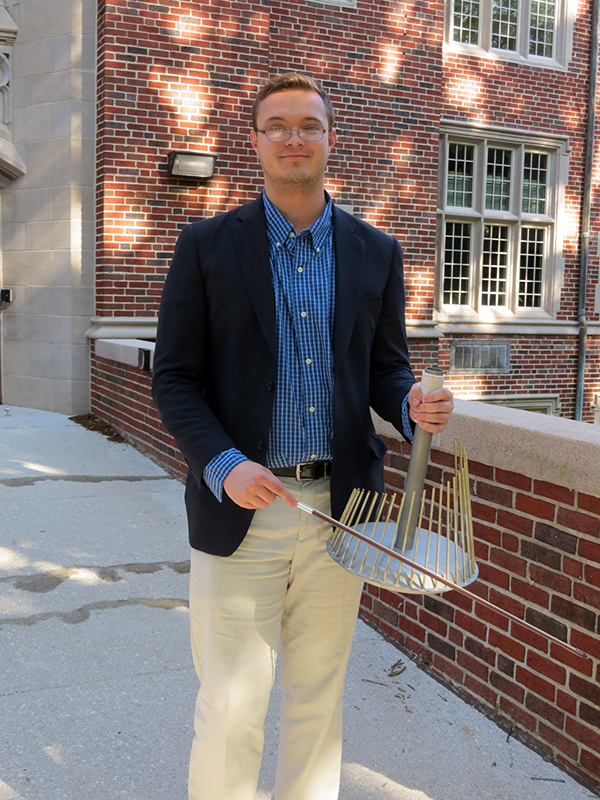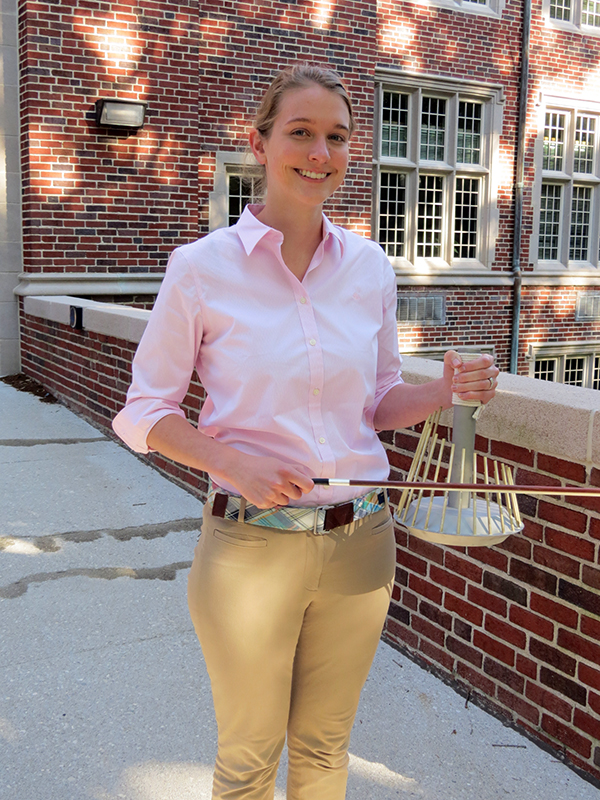
|
University of Tennessee Materials Science & Engineering |
|
Senior Capstone Experience Materials Selection & Design of Waterphones Knoxville, TN, Spring Semester, 2019 One quartet of seniors in the Materials Science & Engineering department chose as their capstone experience a project involving materials selection and design of waterphones. The waterphone is a musical instrument used in soundtracks to make spooky noises, especially in horror and science fiction films, such as Aliens and Poltergeist. The instrument is classified as an idiophone, which means its sound is a result of the vibration of the entire instrument. Water is added to the basin in order to provide a dynamic, nonlinear damping to the reverberations. The team of MSE seniors included Nick Carter, Briar Faulkner, Sabrina Schwerzler & Bradley Straka. They began in Fall semester, 2018 reviewing the literature on the relationship between the acoustics of instruments and material properties. They also met with Prof. Andy Bliss in the UT School of Music and Wesley Fowler, a senior in the music school for guidance from the musician's perspective. 
The team examined two commercially available waterphones, one from Aquasonic and one from Turtle Drums. From these models, the students designed four instruments with varying materials and design. 
Doug Fielden and Philip Lollar in the UT Materials Science & Engineering Machine Shop first fabricated jigs that were ratcheted to fix the spacing between rods around the circumference of the basin. The jig also includes an angled brace to keep the rods in place at a fixed angle. 
Doug and Philip realized the students' vision and crafted beautiful instruments. 
The MSE team brought the instruments to the percussion studio and received feedback from Prof. Bliss and Wesley. 
Although the waterphone is known for making creepy noises, Prof. Bliss wanted less screechiness from the instrument! He also requested that in the next iteration, we create a waterphone with as much range as a piano. When we relayed their request for a waterphone with 88 rods (to match the 88 keys on a piano) to the machinists in the shop, their eyes widened. 
At the EUReCA poster competition, the MSE team apparently abandoned Wesley to answer visitor questions on his own. He acquitted himself well. 
At the final oral presentation, the MSE team presented insights into the processing-structure-property-performance relationship to an audience of MSE students and faculty. They reported a variety of results including microscopy of the welding zones to ensure that the welds had not generated cracks. They performed energy-dispersive X-ray spectroscopy (EDS) to determine composition of the materials. They measured the hardness of the materials and also took the instruments to the sound room in the library to record the instruments. From the Fourier transform of these recordings, they modified an equation to relate the fundamental frequency of a given rod on a waterphone to its diameter, length, Young's modulus and density. 
The presentation concluded with a performance in four movements: (i) counterpoint, (ii) most resonant sounds, (iii) percussive interlude and (iv) most screechy sounds.

Nick Carter and the "base case" waterphone with 13" diameter stainless steel basin and 36 brass rods. 
Briar Faulkner and the "copper basin" waterphone with 13" diameter copper basin and 36 brass rods. 
Sabrina Schwerzler and the "small basin" waterphone with 9" diameter stainless steel basin and 24 brass rods. 
Bradley Straka and the "steel rods" waterphone with 13" diameter stainless steel basin and 36 carbon steels rods, half of which were subject to heat treatment followed by annealing and the other half by rapid quenching. 
Joined by the project advisor, Prof. David Keffer, the quintet performs in front of Ferris Hall. The MSE team also presented the poster at the Tickle College of Engineering Senior Design Showcase. A video of the poster presentation is here. 
Instrument mirror images for right-handed and left-handed players. 
Philip Lollar, waterphone artisan. More photos on the Keffer research group site. |